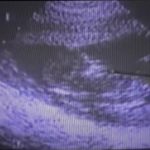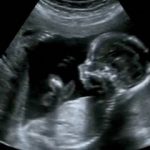Article Review – Answering the Pain Deniers
[http://www.doctorsonfetalpain.com/answering-the-pain-deniers/]
Answering the Pain Deniers is an online article which includes several endnotes of research documenting the answers provided to debunk three claims made by those who do not want to recognize a fetus’ ability to feel pain any earlier than they can elude. The responses are good summaries of the research, yet I found reading the quotes from the research to be better than the summaries. Here are some of my favorite quotes [with additional notes from me in brackets] from the article (but without their additional references included in that article), which I recommend you read for yourself, even though I still hold the experiential truth that babies can feel the pain of their deaths at less than eight weeks after being conceived. [Read Isaac’s Personhood Story and My Baby is in Heaven.]
Response to Claim 1 “. . .there is substantial medical evidence that in the brain it is the thalamus, rather than the cerebral cortex, that is principally responsible for pain perception. . .”
Response to Claim 2 “. . .fetal surgeons have found it necessary to sedate the unborn child with anesthesia to prevent the unborn child from thrashing about in reaction to invasive surgery. . .” [Read Article Review_The First Ache.]
Response to Claim 3 “. . .the claim of such consensus [that the unborn child does not experience pain until the third trimester] is based on publications by abortion practitioners and advocates, not independent and objective scientific sources, while it ignores substantial medical evidence to the contrary. . .. these sources were produced by strong abortion advocates – indeed, by abortion practictioners.”
Endnote 2 “’Movement of the fetus in response to external stimuli occurs as early as 8 weeks gestation [6 weeks post-conception] . . .’” [Read Book Review_A Child Is Born.]
Endnote 2 “’The earliest reactions to painful stimuli motor reflexes can be detected at 7.5 weeks of gestation [5.5 weeks post-conception] (Table 2).’”
Continue reading...
Endnote 3 “’Invasive fetal procedures clearly elicit a stress response…’”
Endnote 3 “’Fetal stress in response to painful stimuli is shown by increased cortisol and β-endorphin concentrations, and vigorous movements and breathing efforts.. . . There is no correlation between maternal and fetal norepinephrine levels, suggesting a lack of placental transfer of norepinephrine…’”
Endnote 4 “’Although we do not know exactly when the fetus can experience pain, noxious stimulation during fetal life causes a stress response, which could have both short- and long-term adverse effects on the developing central nervous system.’”
Endnote 4 “’This nociceptive stimulation of the fetus also has the potential for longer-term effects, so there is a need for fetal analgesic treatment.’”
Endnote 4 “’It is becoming increasingly clear that experiences of pain will be ‘remembered’ by the developing nervous system, perhaps for the entire life of the individual.. . . These findings should focus the attention of clinicians on the long-term impact of early painful experiences, and highlight the urgent need for developing therapeutic strategies for the management of neonatal and fetal pain.’”
Endnote 5 “’. . .the stress response to noxious stimulation is clear evidence that the fetal nervous system is reactive. Administration of fetal anesthesia has been the standard practice since the inception of fetal surgery more than 25 years ago, and it is practiced worldwide. The importance of fetal immobility, cardiovascular homeostasis, analgesia, and perhaps, amnesia have always been emphasized in fetal surgery practice.’”
Endnote 5 “’ The anaesthesiologist is required to provide both maternal and fetal anaesthesia and analgesia while ensuring both maternal and fetal haemodynamic stability…Since substantial evidence exists demonstrating the ability of the second trimester fetus to mount a neuroendrocrine response to noxious stimuli…fetal pain management must be considered in every case.’. . . ‘A substantial amount of. . .research demonstrated that the fetus is able to mount a substantial neuroendocrine response to noxious stimuli as early as the second trimester of pregnancy. Fetal neuroanatomical development further substantiates this research. Evidence also exists that suggests that these responses to noxious stimuli may, in fact, alter the response to subsequent noxious stimuli long after the initial insult. This is the rationale behind providing fetal anaesthesia and analgesia whenever surgical intervention is thought to potentially provide a noxious insult to the fetus.’”
Endnote 5 “’Despite ongoing debate regarding fetal capacity for pain perception, fetal anesthesia and analgesia are warranted for fetal surgical procedures.’”
Endnote 6 “’The evidence and functional arguments reviewed in this article are not easily reconciled with an exclusive identification of the cerebral cortex as the medium of conscious function… The tacit consensus concerning the cerebral cortex as the “organ of consciousness” would thus have been reached prematurely, and may in fact be seriously in error.’”
Endnote 7 “’Indeed, there is evidence that hydranencephanic children responds to painful and pleasurable stimuli in a coordinated manner similar to other children.11’”
Endnote 7 “’ My impression from this first-hand exposure to children with hydranencephaly confirms. . . .[T]hese children are not only awake and often alert, but show responsiveness to their surroundings in the form of emotions or orienting reactions to environmental events… They express pleasure by smiling and laughter, and aversion by “fussing,” arching of the back and crying (in many gradations), their faces being animated by these emotional states.’”
Endnote 8 “’ Penfield and Jasper note that cortical removal even as radical as hemispherectomy does not deprive a patient of consciousness, but rather of certain forms of information, discrimination capacities, or abilities, but not of consciousness itself… What impressed Penfield and Jasper was the extent to which the cerebral cortex could be subjected to acute insult without producing so much as an interruption in the continuity of consciousness. Their opinion in this regard bears some weight, in that their magnum opus of 1954 – Epilepsy and the Functional Anatomy of the Human Brain – summarizes and evaluates experience with 750 such operations.’”
Endnote 8 “It seems that consciousness can persist even when great quantities of the cortex are absent.’”
Endnote 9 “’Newborn infants show strong pain behaviour, but the study of the development of nociceptive pathways shows that their pain involves functional signaling pathways that are not found in the mature nervous system in healthy individuals.’”
Endnote 9 “’Clinical and animal research shows that the fetus or neonate is not a “little adult,” that the structures used for pain processing in early development are unique and different from those of adults, and that many of these fetal structures and mechanisms are not maintained beyond specific periods of early development. The immature pain system thus uses the neural elements available during each stage of development to carry out its signaling role.’”
Endnote 9 ‘”[P]ain perception during fetal and neonatal development does not necessarily involve the same structures involved in pain processing as those in adults, meaning that the lack of development of certain connections is not sufficient to support the argument that fetuses can not feel pain until late gestation.. . . Some say even that the structures used for pain processing in the fetus are completely different from those used by adults and that many of these structures are not maintained beyond specific periods of early development.. . .’”
